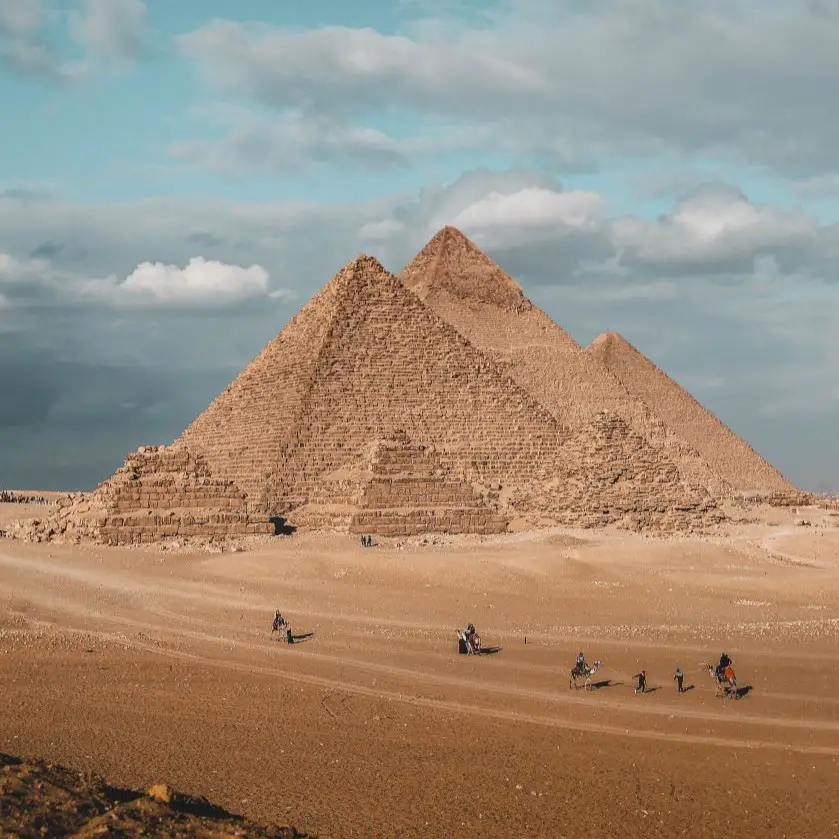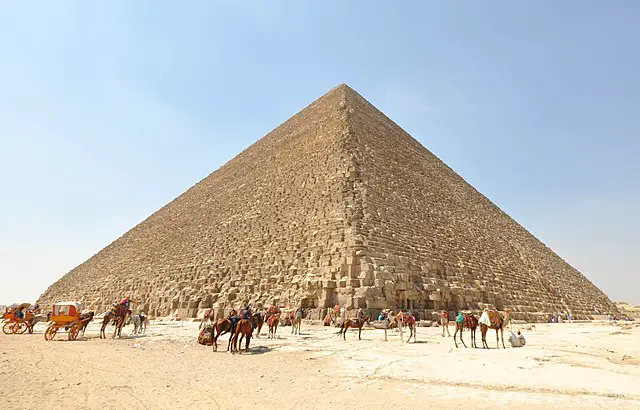
The Great Pyramid of Giza, one of the Seven Wonders of the ancient world, stands as an awe-inspiring testament to the ingenuity and ambition of the ancient Egyptians. It has captured the imaginations of countless generations, inspiring explorers, scholars, and tourists alike. Yet, behind this monumental structure lies a mystery that has intrigued historians for centuries – which pharaoh built the Great Pyramid?
In this captivating journey through time, we will explore the fascinating world of ancient Egypt, uncover the secrets of the Giza Pyramid, and reveal the identity of the pharaoh responsible for its creation.
Table of Contents
The Great Pyramid: A Timeless Wonder
Before we dive into the heart of our mystery, let’s take a moment to marvel at the sheer grandeur of the Great Pyramid. This colossal structure, situated on the Giza Plateau, is believed to have been built during the Old Kingdom of ancient Egypt, specifically during the 4th dynasty.
Standing at a remarkable height of approximately 455 feet (139 meters) and covering an area of 13.1 acres, the Great Pyramid was, for millennia, the largest pyramid structure on Earth. Constructed using an estimated 2.3 million stone blocks, typically limestone and granite, this astonishing monument served as a tomb for its enigmatic builder – a pharaoh of immense importance.
Which Pharaoh Built the Great Pyramid?

Pharaoh Khufu, reigned during the 4th dynasty of the Old Kingdom, around 2580-2560 BCE. He has built the Great Pyramid, which served as his final resting place.
Although evidence linking Khufu directly to the Great Pyramid is not as clear-cut as we might hope, various discoveries and historical records support this hypothesis.
Clues from the Past
One of the most compelling pieces of evidence tying Khufu to the Great Pyramid is a small, but significant, mark discovered within the pyramid. In a hidden chamber, inscriptions were found that bore the name of Khufu, providing a tantalizing link between the pharaoh and his monumental tomb.
Additionally, the workmen’s graffiti discovered on the Giza plateau contains references to Khufu and the construction of the pyramid. These scribbles, left by laborers who toiled on this colossal project, further strengthen the case for King Khufu’s involvement.
The Ancient Egyptian Vision
To truly appreciate the significance of the Great Pyramid, we must understand the vision of the ancient Egyptians. These resourceful and spiritually inclined people believed in an afterlife, and they meticulously constructed elaborate tombs, such as the Great Pyramid, to ensure the safe passage of their pharaohs into the next world.
The pyramid, with its precise alignment to the cardinal points, was not just a monumental tomb but a symbol of the pharaoh’s divine authority and a bridge between the earthly realm and the celestial heavens. It was, in essence, a testament to the power and grandeur of the ancient Egyptian civilization.
A Companion to the Pyramid
No exploration of the Great Pyramid would be complete without mentioning its enigmatic neighbor – the Great Sphinx. This colossal limestone statue, with the body of a lion and the head of a pharaoh, guards the entrance to the Giza Plateau. While the identity of the Sphinx’s builder remains uncertain, its presence adds an aura of mystique to the Giza complex.
Legacy Beyond the Ages
The enduring legacy of the Great Pyramid is not just limited to its historical and architectural significance. It has inspired countless generations, from Napoleon Bonaparte, who conducted surveys of the pyramid, to modern-day scientists who continue to uncover its secrets through advanced technologies like ground-penetrating radar.
Moreover, the Great Pyramid’s precise construction techniques, such as the use of leveling instruments and the creation of a perfectly square base, continue to baffle experts. These innovations, achieved by the ancient Egyptians with astonishing precision, serve as a testament to their engineering prowess.
Conclusion
In our quest to unravel the mystery of which pharaoh built the Great Pyramid, we’ve journeyed through the annals of ancient Egyptian history, examined compelling evidence, and glimpsed into the extraordinary world of the ancient Egyptians. While no discovery is without its uncertainties, the prevailing consensus among historians points to Pharaoh Khufu as the visionary leader behind this architectural marvel.
The Great Pyramid, with its timeless allure, stands not only as a testament to the greatness of Khufu but also as an enduring symbol of the incredible achievements of the ancient Egyptian civilization. Its mysteries continue to captivate our imaginations, reminding us that even in the face of the ages, some secrets are destined to remain shrouded in the sands of time.
As we contemplate the awe-inspiring grandeur of the Great Pyramid of Giza, let us also celebrate the ingenuity and determination of those who built it, and the enduring legacy they left for all of humanity to marvel at and admire.